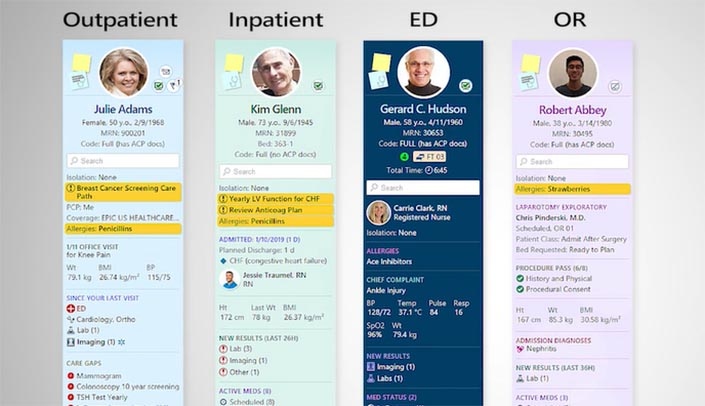It’s going to be a big change, but once One Chart users are accustomed to it, “Storyboard” is expected to make their job easier. This new redesign of the workspace aims to make it much simpler for patient care staff to learn about their patients at a glance. Storyboard will replace the patient header in One Chart from a simple summary to a rich source of information. It will go live Tuesday, Dec. 3.
“My favorite feature is that you no longer need to click around the chart to view pertinent information for daily patient care,” said Emilie Langenhan, Pharm.D., and member of the pilot group. “You can efficiently review the patient’s allergies, problem list, care team or other relevant information for your role while completing any task in the medical record.”
Storyboard has three major goals:
- Standardize the patient story and present useful, legible and relevant data;
- Avoid screen jumps by hovering and “take action right” from Storyboard; and
- Make better use of available screen space.
Storyboard also allows the user to obtain more detail and take action without leaving the current workflow. Storyboard saves clicks, cuts down on disruptive jumps between screens and makes better use of available space within the patient workspace. When the user first sees Storyboard, the system automatically simplifies the activity tabs based on actual usage in each workspace.
“It took me three days to adjust to Storyboard,” said Justin Birge, M.D., assistant professor in the UNMC Division of Hospital Medicine. “I recommend people elect to turn it on now and tinker with it for a few minutes.”
That’s also the recommendation from the One Chart training team. The Customize and Navigate Your Storyboard tip sheet is now available showing users how to “toggle on” Storyboard view and personalize workspace activities.
More than 180 users from a variety of roles across the organization recently participated in a pilot of Storyboard’s functionality and provided valuable feedback.
“Storyboard is a fundamental Epic workspace change based on years of research, development, usability testing and customer experience,” Dr. Birge said. “Even with that volume of research and development, there will be challenges with such an impactful change. This is why it is critical to use Storyboard and provide constructive feedback during our transition period. Once adopted, Storyboard will present useful, relevant and actionable data in a more organized and legible way while reducing clicks and mouse movements.”
Questions regarding Storyboard and other One Chart needs may be sent here.
Click here for a video demo of Storyboard
.
